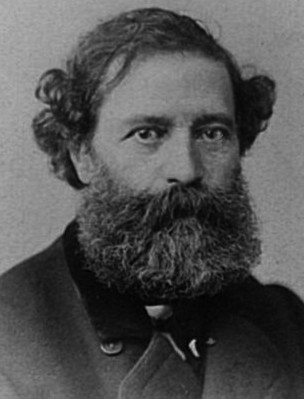Py

Pyat, Felix (1810-1889)
Born in the town of Vierzon, Felix Pyat was called to the Paris bar in 1831, dedicating his energies to journalism. He was arrested in 1844 and served six months in prison for the writing of a pamphlet. Elected to the Constituent Assembly in 1848 as a member of the Mountain, he presented the motion calling for the abolition of the office of president. It was around this time he fought a duel with P-J Proudhon after the latter called him the “aristocrat of democracy.” Forced into exile for his part in Ledru-Rollin’s failed attempt of 1849, he was brought up on charges in England for his praise of Orsini’s attempt on the life of Napoleon III. Allowed to return to France after the 1869 amnesty he edited “Le Combat,” which was suppressed after the French defeat, but was replaced by “Le Vengeur.” At first a member of the National Assembly, he was to become a member of the Committee of Public Safety under the Commune, and was behind some of its better known acts of political vandalism: the destruction of the Vendome Column, of Thiers’ residence, and the Chapelle Expiatoire, built to atone for the execution of Louis XVI. He was able to escape France after the crushing of the Commune, and though condemned to death in absentia in 1873 was allowed to return to France in 1880. Elected to the Chamber of Deputies as a member of the extreme left, he died in 1889.
See Felix Pyat Archive.
Pyatakov, Yuri (1890-1937)
Born the son of an engineering manufacturer, as a youth he was a member of various anarchist student circles from 1904 to 1910. He then joined the Bolsheviks being expelled shortly afterwards from St Petersburg University and exiled for revolutionary agitation. In 1912 he took part in re-establishing the Kiev Committee of the Bolsheviks, but was again arrested and exiled. In October 1914 he fled to Japan and from there reached Europe where he attended the Berne Conference of the Bolsheviks in February 1915 together with Lenin, Bukharin, Zinoviev and Krylenko. He supported Lenin on the war question but joined Bukharin in opposing Lenin’s defence of the right of nations to self-determination. He became chairman of the Kiev committee of the Bolsheviks after the February Revolution and during October was chairman of the Revolutionary Committee there. Following the revolution he was Commissar of the State Bank, but then undertook underground work in the Ukraine under German occupation. He supported Bukharin’s ‘left communist’ group which opposed the Brest peace in 1918. With the collapse of the Germans he became chairman of the provisional Ukrainian workers and peasants’ government formed at Kursk in November 1918, but was replaced by Rakovsky in the Kharkov-based Ukrainian Soviet government. He then belonged to the left wing of the Ukrainian Central Committee. From 1919 to 1921 he held various party posts in the Red Army, but after the Civil War was put in charge of the Donbass Coal Industry Board to rehabilitate the mines in the area. In the trade union controversy of 1920-1921 he supported Trotsky and Preobrazhensky favouring a stronger administrative function for the Soviet unions. In 1923 he was made deputy chairman of the Supreme Council of National Economy. The same year he was elected a full member of the Central Committee on which he remained until 1927. He was a leading member of the 1923 Left Oppositionist and in 1926 supported Trotsky in the Joint Opposition. During this period he was occupied in various important financial and industrial posts. He was removed from the Central Committee and expelled from the Communist Party at the 15th Congress in December 1927 and was exiled. He capitulated to Stalin in 1929 and was given successive posts in banking and industrial management, becoming deputy People’s Commissar for Heavy Industry in 1933. He was expelled from the party again in 1936, framed at the second Moscow Trial and executed as a ‘Trotskyite’ in January 1937.